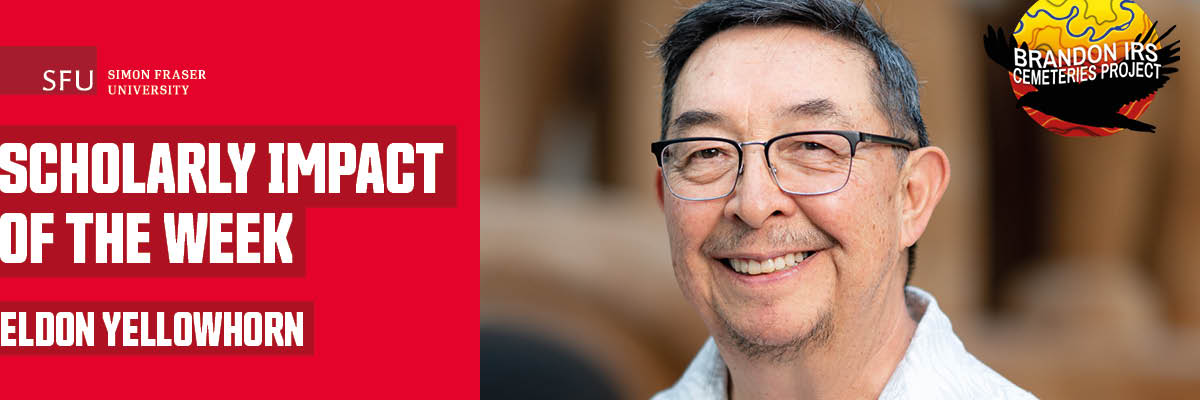
This content may be distressing or triggering of traumatic experiences. Please reach out if you need support, available 24/7 at: The National Centre for Truth and Reconciliation Residential School Crisis Line: 1-866-925-4419 and the Indian Residential School Survivors Society Emergency Crisis Line:
1-800-721-0066.
September brings the start of the new school year, but it is also a time to pause and commemorate the thousands of children that did not come home from Canadian residential schools, while acknowledging the harms to all.
Over a decade ago, Simon Fraser University (SFU) researchers began work on the Brandon Indian Residential School (IRS) Cemeteries Project, an important collaboration with the Sioux Valley Dakota Nation (SVDN) of southwestern Manitoba.
The project seeks to reclaim the identities of children who died at the school while it was in operation between 1895 and 1972. Investigations into the cemeteries and unmarked graves began in 2012 when the SVDN—which owns a portion of the school property—collaborated with Katherine Nichols, who was then a University of Manitoba master’s student. As a PhD candidate at SFU, Nichols continues her research at the Brandon Indian Residential School. Faculty at Brandon University and the University of Windsor are also partners in this research, which received Social Sciences and Humanities Research Council funding support in 2019.
SFU Indigenous Studies Professor and archaeologist Eldon Yellowhorn is the principal investigator for the project. Yellowhorn supervised Nichols, and works with SFU researchers Deanna Reder, Hugo Cardoso and Dongya Yang and with students and research assistants from SFU. Faculty from the partner universities include Emily Holland (Brandon) and John Albanese (Windsor). They are using a variety of methods including archival research, oral history interviews with community members and Elders, and non-invasive archaeological and forensic search techniques.
Identifying and acknowledging the children at the Brandon IRS site—and all former Canadian residential school sites—is a human rights issue and a vital step towards finding answers for communities and for moving forward. Despite the challenges, Yellowhorn and the team are committed to ensuring their research is community-led, grounded in culture, follows the guidance of Elders and follows protocols for ethical research.
As one of Canada's first collaborative, in-depth research investigations into unmarked graves associated with a residential school, Yellowhorn hopes that their efforts will provide a framework that can be adopted and applied by other Indigenous communities, as a guide to initiate and proceed in their own process. “It is very important for our communities to have control over our lives and histories,” he says. “We hope this project shows that we are capable of doing this work within the community and we do not have to wait for outside experts—we can be the experts.”
We spoke with Professor Yellowhorn about his research.
Can you tell us about some of the challenges associated with taking on a project of this nature? How have the researchers overcome these challenges?
I can only speak for myself when I say the nature of this research can be emotionally taxing. Although we can rely on our scientific objectivity to partially shield us, we cannot unplug our humanity. We are people with our own family connections. When I first started looking for abandoned cemeteries, I gained a greater appreciation of my relatives and friends. I can make a general observation that our team finds solace in knowing our research will give answers to people who have been waiting a long time to find out why children died at this school.
Have you been able to identify many of the children and their associated communities?
Based on the initial surveys that Nichols conducted using various geophysical methods, we were confident that 104 was an accurate count of burials in this cemetery. Despite the great strain the COVID-19 pandemic put on our project objectives, we are positive that we have reclaimed the identities of 99 of the children buried there. We are now able to reach out to the communities where children have family ties. Moreover, the Sioux Valley Dakota Nation has hosted several delegations from northern Manitoba to discuss next steps for their relatives buried here.
Has the community decided on any plans for the future of the site?
There are several options ranging from commemoration of the place to repatriation. Families affected by this research and representatives from the home communities of these children will contribute to determining the next steps. In the meantime, we will continue to scour archival records and conduct oral history interviews until we have reclaimed the identities of the last group of unknown children.
For more, visit the Brandon IRS Project website, read the SFU News article and watch the APTN News story.
SFU's Scholarly Impact of the Week series does not reflect the opinions or viewpoints of the university, but those of the scholars. The timing of articles in the series is chosen weeks or months in advance, based on a published set of criteria. Any correspondence with university or world events at the time of publication is purely coincidental.
For more information, please see SFU's Code of Faculty Ethics and Responsibilities and the statement on academic freedom.